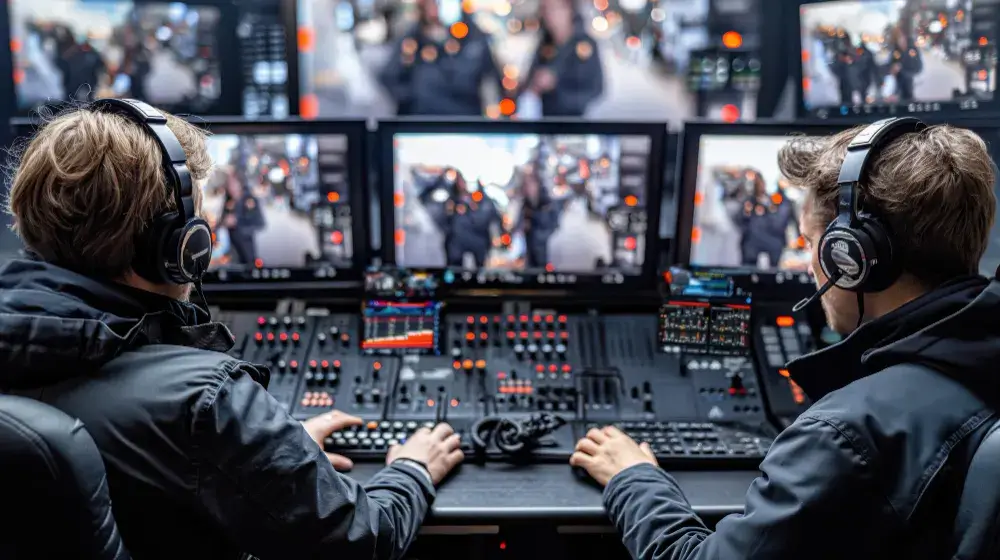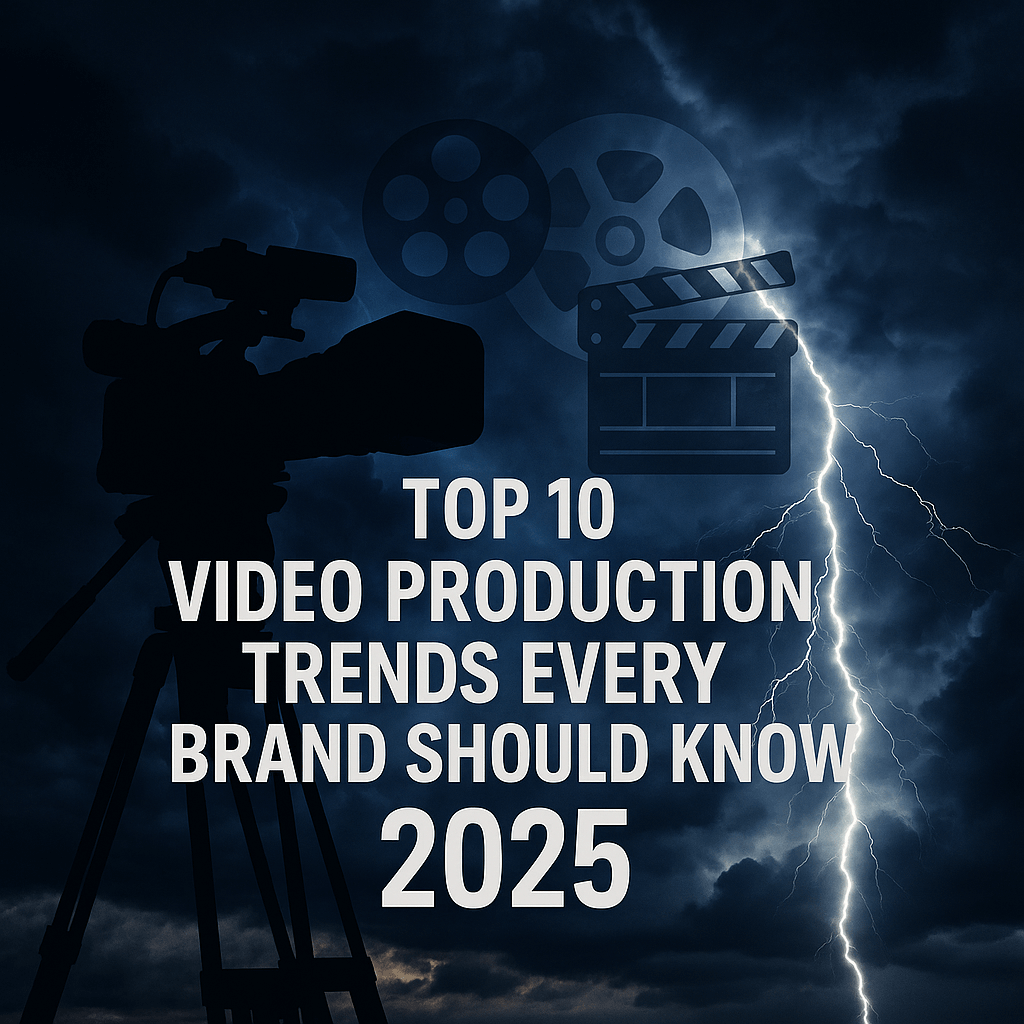Planning an event and unsure whether to live stream or broadcast it?
Both broadcasting and live streaming serve the core function of transmitting content to an audience. However, their infrastructure, delivery systems, viewer interactivity, and costs are dramatically different. While traditional broadcasting uses satellite and cable networks, live streaming depends on internet protocols to deliver content across digital platforms.
When it comes to deciding which method suits your event, understanding the technical differences becomes crucial. A political debate, for instance, might benefit from broadcasting for its mass reach and stability, whereas an interactive product launch would thrive on live streaming’s real-time engagement capabilities.
The choice between broadcast vs live streaming isn’t always binary, many events today adopt hybrid strategies. But before mixing both, you need clarity on how each works independently and what advantages they bring to the table.
What Is Broadcasting?
Traditional Broadcast Overview
Broadcasting is the conventional method of delivering audiovisual content using satellite, cable, or over-the-air transmission networks. It operates on a one-to-many communication model, pushing a signal out to a broad audience without expecting interaction in return.
Think of your TV or radio. Channels are pre-scheduled, and programming is regulated and distributed at specific times through a stable infrastructure.
Broadcasting requires expensive hardware, including satellite dishes, transmission towers, and signal licenses, making it a high-cost operation, but one that promises unmatched reach and consistency.
Read more: Why 4K Video Production Isn’t Just for TVs
Use Cases for Broadcasting
- Live sports tournaments with global viewers
- National television shows with weekly schedules
- Emergency government broadcasts for public safety
- Major political addresses requiring universal access
Broadcasting remains ideal for content that needs guaranteed stability, a large-scale audience, and a traditional media environment.
What Is Live Streaming?
Live Streaming Explained
Live streaming is the real-time delivery of video or audio over the internet. Unlike broadcasting, it requires no cable or satellite. Instead, data is transmitted through streaming servers and viewed on mobile phones, tablets, desktops, or smart TVs via platforms like YouTube, Facebook Live, Vimeo, or custom embeds on websites.
This model democratizes content delivery, almost anyone with a camera, encoder, and internet access can stream content globally. It allows greater personalization and interaction, making it especially attractive to brands and event planners aiming to connect directly with specific audiences.
Use Cases for Live Streaming
- Hybrid or virtual conferences with remote participants
- Music concerts with both on-site and global viewers
- Product launches targeting niche audiences
- Interactive webinars or training sessions
Live streaming works best for events that prioritize accessibility, audience engagement, and cost-effective production.
Key Differences Between Broadcasting and Live Streaming
| Feature | Broadcasting | Live Streaming |
| Platform | TV, Radio, Cable | YouTube, Facebook, Zoom, Custom URLs |
| Audience Reach | Mass public, non-targeted | Global but specific or niche viewers |
| Interactivity | One-way only | Two-way (chat, polls, reactions) |
| Cost | High (equipment + licensing) | Scalable (low to mid-range) |
| Accessibility | Requires TV or radio device | Any device with an internet connection |
Understanding the difference between streaming and broadcasting helps clarify what your infrastructure and team need to manage before your event even begins.
Read more: Video Production Budget Tips: Simple Ways to Cut Costs
Pros and Cons
Pros of Broadcasting
- Massive audience scale across entire regions or countries
- Highly reliable infrastructure built for uninterrupted delivery
- Credibility and prestige, often seen as more “official”
Cons of Broadcasting
- Expensive hardware, licensing, and staffing
- Rigid scheduling with minimal room for real-time feedback
- No interactivity, viewers can only watch, not respond
Pros of Live Streaming
- Cost-effective setup compared to broadcasting
- Interactive features like real-time chat, Q&A, polls
- Platform flexibility across mobile apps, social media, and web embeds
Cons of Live Streaming
- Requires strong and stable internet bandwidth
- Video quality may fluctuate depending on viewer connections
- Susceptible to technical glitches if not professionally managed
When analyzing which is better: live streaming or broadcasting, the answer heavily relies on your event objectives.
Read more: Multi-Stream Video Channels for Production Companies
How to Choose What’s Best for Your Event
- Audience Size & Type
Planning for a global audience that may tune in via smartphone or desktop? → Live Streaming
Need to reach millions of viewers through their television sets? → Broadcasting
- Production Scale
Need cinematic-grade visuals, complex setups, and regulatory control? → Broadcasting
Planning for intimate, interactive experiences or remote-only events? → Live Streaming
- Interactivity Expectations
Want audience feedback, comments, or Q&A in real-time? → Live Streaming
Prefer controlled, polished delivery with no external interruptions? → Broadcasting
- Budget and Resources
Working with a tight or mid-tier budget? → Live Streaming
Ready for large investments and professional teams? → Broadcasting
- Device Accessibility
Want people to tune in from mobile phones, laptops, or tablets? → Live Streaming
Prefer a TV-only broadcast where viewers tune in passively? → Broadcasting
Read more: Hidden Costs of Video Production Budget Cuts | Skystorm Insights
Can You Combine Broadcasting and Live Streaming?
Yes. Modern events often combine both broadcasting and live streaming to maximize reach and engagement. This hybrid approach captures the stability and wide audience of broadcasting while offering the interactivity and flexibility of streaming.
Examples of Hybrid Event Setups:
- Award shows aired live on TV while also streaming on YouTube or social media
- Political rallies covered by news channels and live streamed via party websites
- Sports matches simulcast across networks and streaming apps like ESPN+
For brands wanting both prestige and accessibility, the hybrid format offers the best of both worlds, especially when executed with professional support from companies like Skystorm.
FAQs
What is the main difference between live streaming and broadcasting?
Broadcasting uses cable, satellite, or over-the-air signals to deliver content to TV or radio. Live streaming uses the internet to transmit content to digital devices.
Is live streaming considered broadcasting?
Not technically. While live streaming delivers real-time content, it operates through internet protocols rather than traditional broadcast signals.
Which is cheaper: live streaming or broadcasting?
Live streaming is generally cheaper. It requires fewer resources, no licensing fees, and is scalable based on your budget.
Can I stream a live event on TV?
Yes, but it requires additional hardware or a smart TV app. You can also use platforms like Roku, Apple TV, or Chromecast to stream digital events on TVs.
Does live streaming require more internet bandwidth than broadcasting?
Yes. Live streaming depends on upload and download speeds. Broadcasting relies on pre-established cable or satellite infrastructure, not the internet.
Which is more interactive: broadcast or live stream?
Live streaming is more interactive. Viewers can comment, ask questions, or respond in real-time, unlike broadcasting, which is one-way.
Conclusion
The debate between broadcast vs live streaming isn’t about which is better universally, it’s about what fits your event’s needs.
For high-budget, non-interactive, mass-scale productions, broadcasting remains a dominant choice. But for flexible, budget-conscious, and engagement-driven events, live streaming leads the way. And if your goals require both reach and interactivity? A hybrid model might be your best bet.
Need help deciding? Skystorm specializes in both broadcast and live stream event production. Whether it’s a corporate conference, music festival, or product reveal, our expert team can design and deliver the right solution for your brand’s next big moment.



